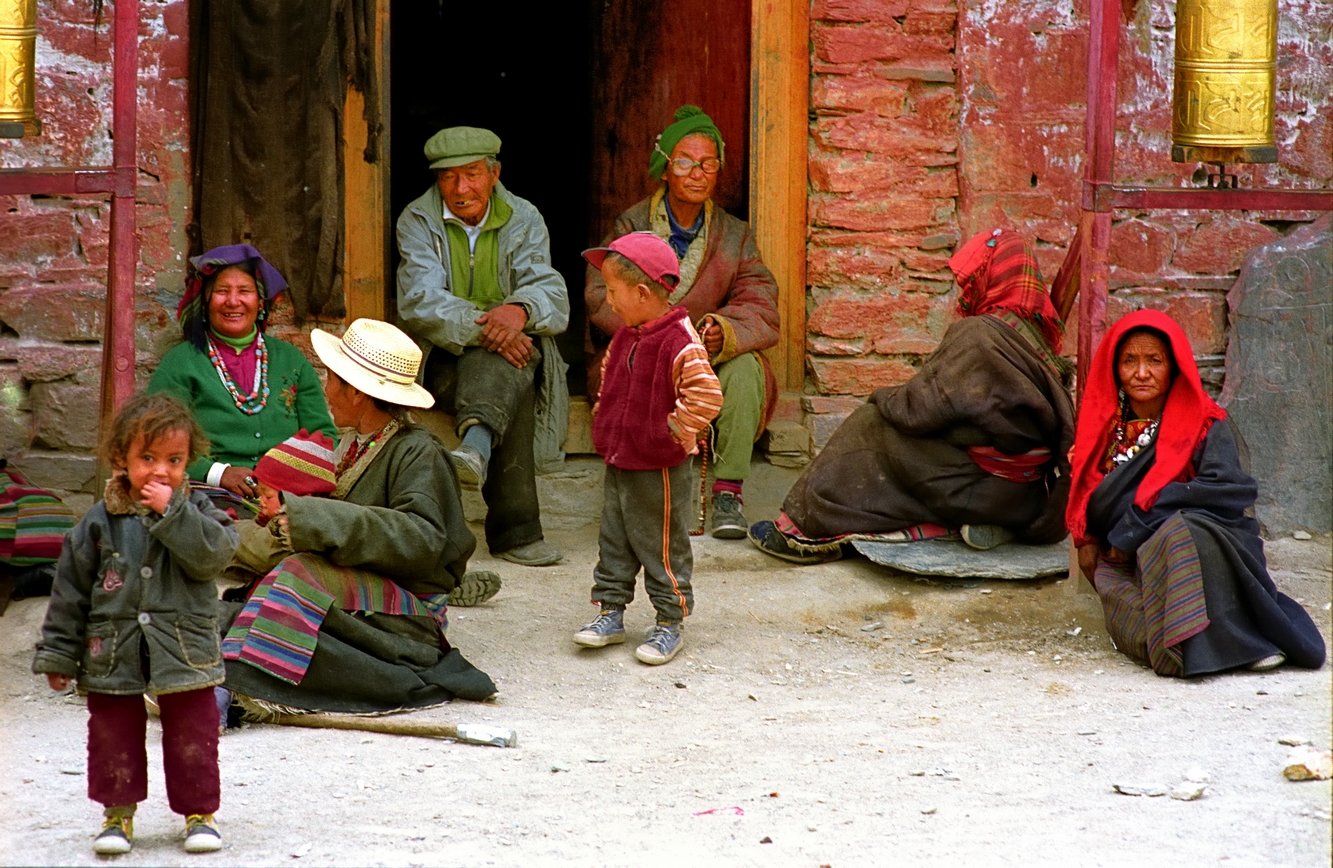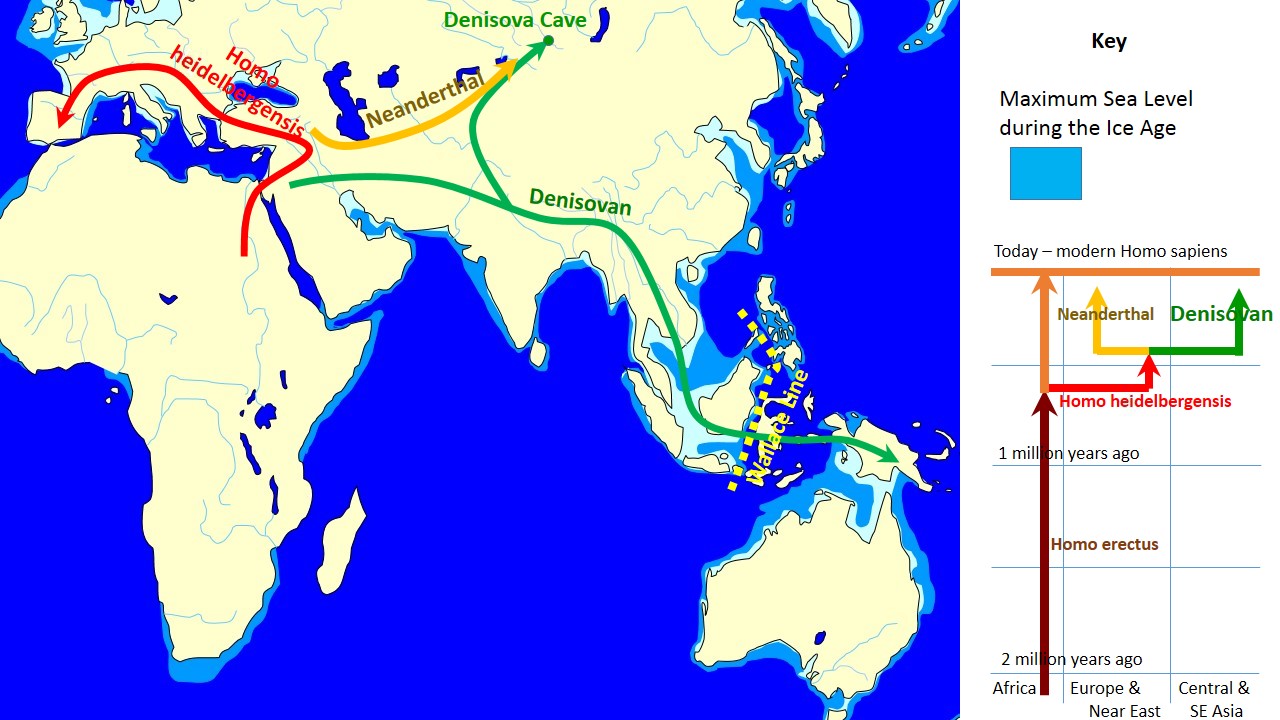
Tibetans. Image courtesy of: reurinkjan on Flickr
Have you ever climbed up a mountain and found it more difficult to breathe as you got closer to the summit? Tibetans do not have this problem because they have a gene that makes it easy for them to live at high altitudes. They got this gene from an extinct species of human known as Denisovans.
At high altitudes, people get altitude sickness because of the thinner air. When the body is unable to get the oxygen it needs, you start to breathe faster. Symptoms such as headache and loss of appetite start to appear and remain until your body gets used to the elevation change. Tibetans, however, are able to live at altitudes above 4,000 meters. They never experience altitude sickness despite having less hemoglobin in their blood than the average person.
In 2010, researchers found several genes that give Tibetans the ability to efficiently use low concentrations of oxygen. One gene, known as EPAS1, causes the regulation of hemoglobin production. The EPAS1 gene was sequenced from 40 Tibetans and 40 Han Chinese because they were once part of the same population 2,750 to 5,500 years ago. Emilia Huerta-Sánchez and colleagues found all of the Tibetans and two of the Han Chinese had a segment identical to the EPAS1 gene. The researchers searched genome databases and were unable to find anyone living with the same gene.
With no one living available, they compared the gene with sequences from extinct humans such as Denisovans and Neanderthals. There was a match with the Tibetan gene and Denisovan gene. Researchers checked that Tibetans got the gene from Denisovans by looking at sequenced genes from different parts of the world. They found that Tibetans inherited the gene in the last 40,000 years from Homo heidelbergensis, who passed the gene onto modern humans and Denisovans.

The evolution and geographic spread of Denisovans compared to Neanderthals and modern humans. Image courtesy of: John D. Croft on Wikipedia
Emilia Huerta-Sánchez and colleagues found that Tibetans and the Han Chinese got the EPAS1 gene by mating with Denisovans. This was possible because modern humans were not the only existing humans at the time. Denisovan fossils were found among modern human and Neanderthal fossils showing that all three species interacted with each other.
So why did all forty of the Tibetans sequenced have the EPAS1 gene, but only two of the forty Han Chinese have it? The gene was not beneficial for the Han Chinese because they did not settle in high altitude areas like Tibetans so they lost the gene over time. However, Han Chinese have been found to mate with Tibetans which is why the gene is still found in some of them. The gene was beneficial for Tibetans and through natural selection, the gene proliferated among their population causing their ability to thrive in high-altitude environments.
Want to know more about how Denisovans and Neanderthals relate to the modern human? Check out the video above!
– Sara Djondovic
References
- Davis, C. P. Hemoglobin (Low and High Range Causes). MedicineNet. https://www.medicinenet.com/hemoglobin/article.htm. Published November 8, 2017. Accessed January 13, 2018.
- Gibbons, A. Tibetans inherited high-altitude gene from ancient human. Science. http://www.sciencemag.org/news/2014/07/tibetans-inherited-high-altitude-gene-ancient-human. Published July 2, 2014. Accessed January 13, 2018.
- Healthwise Staff. Altitude Sickness. HealthLinkBC. https://www.healthlinkbc.ca/health-topics/ug3357. Published May 7, 2017. Accessed January 13, 2018.
- Huerta-Sánchez, E. et al. 2014. Altitude adaptation in Tibetans caused by introgression of Denisovan-like DNA. Nature. 0: 1-4.
- N.A. EPAS1 gene. U.S. National Library of Medicine https://ghr.nlm.nih.gov/gene/EPAS1. Published January 9, 2018. Accessed January 13, 2018.
- Wee, R. Y. Who Are The Han Chinese People? World Atlas. https://www.worldatlas.com/articles/who-are-the-han-chinese-people.html. Published April 25, 2017. Accessed January 13, 2018.
